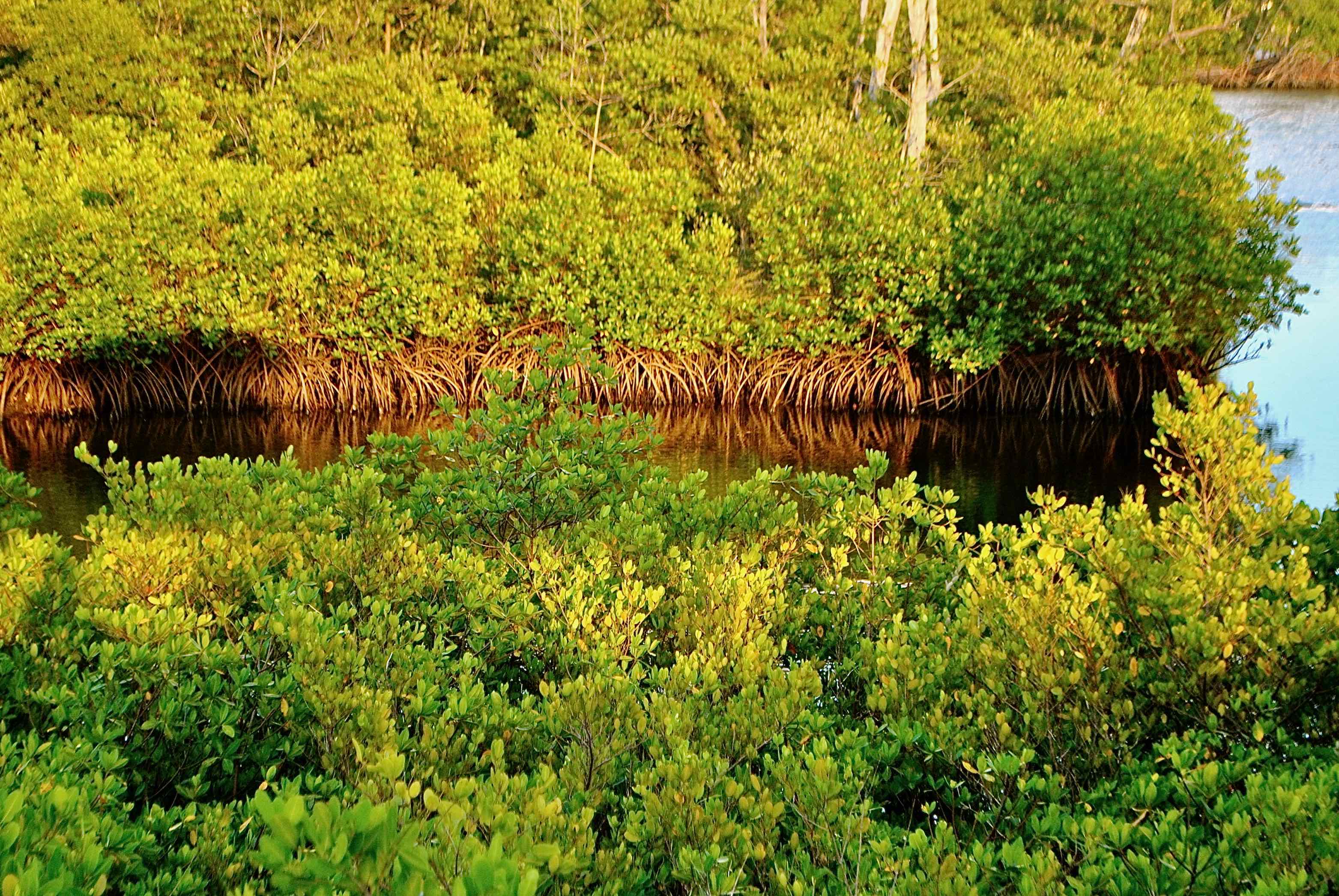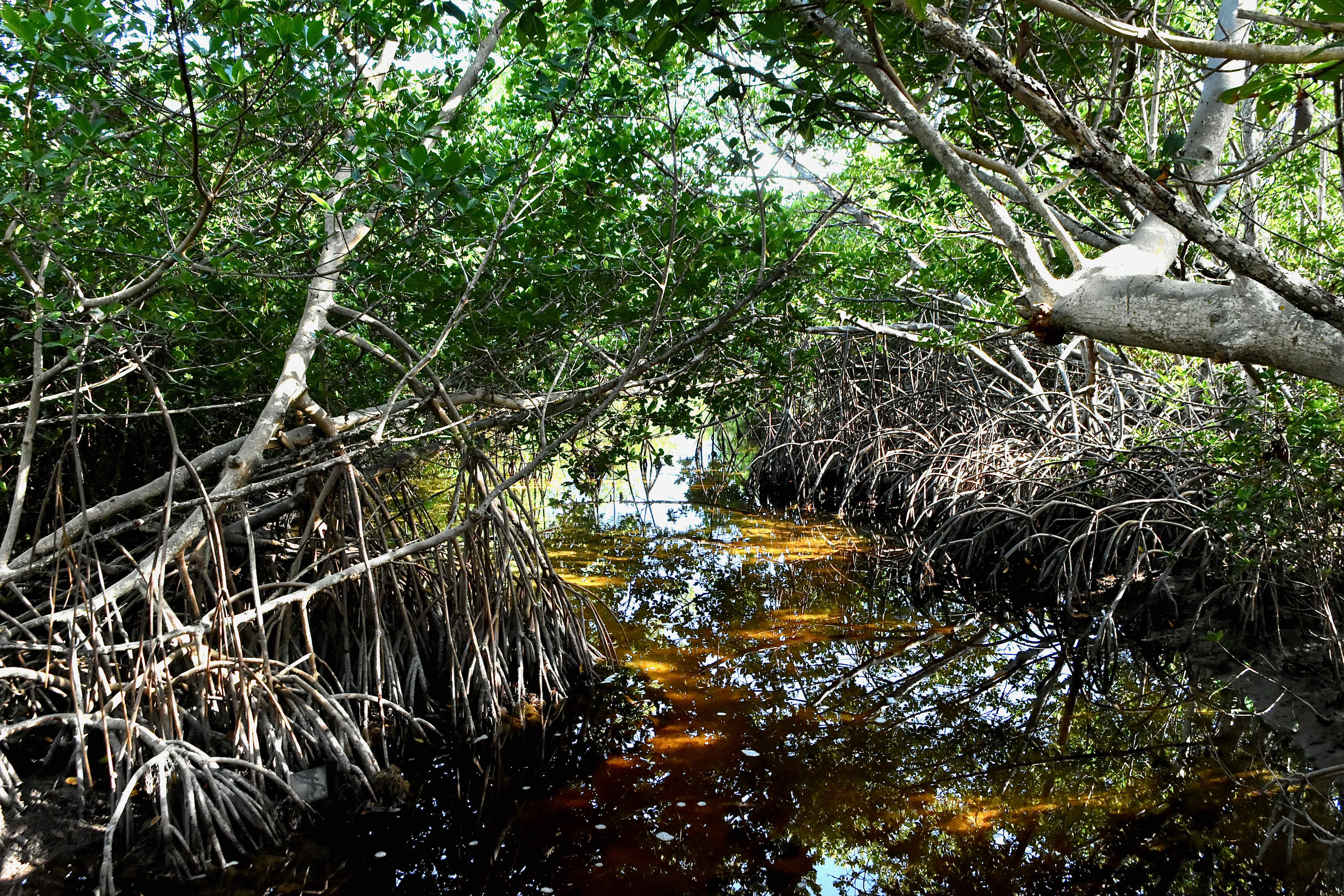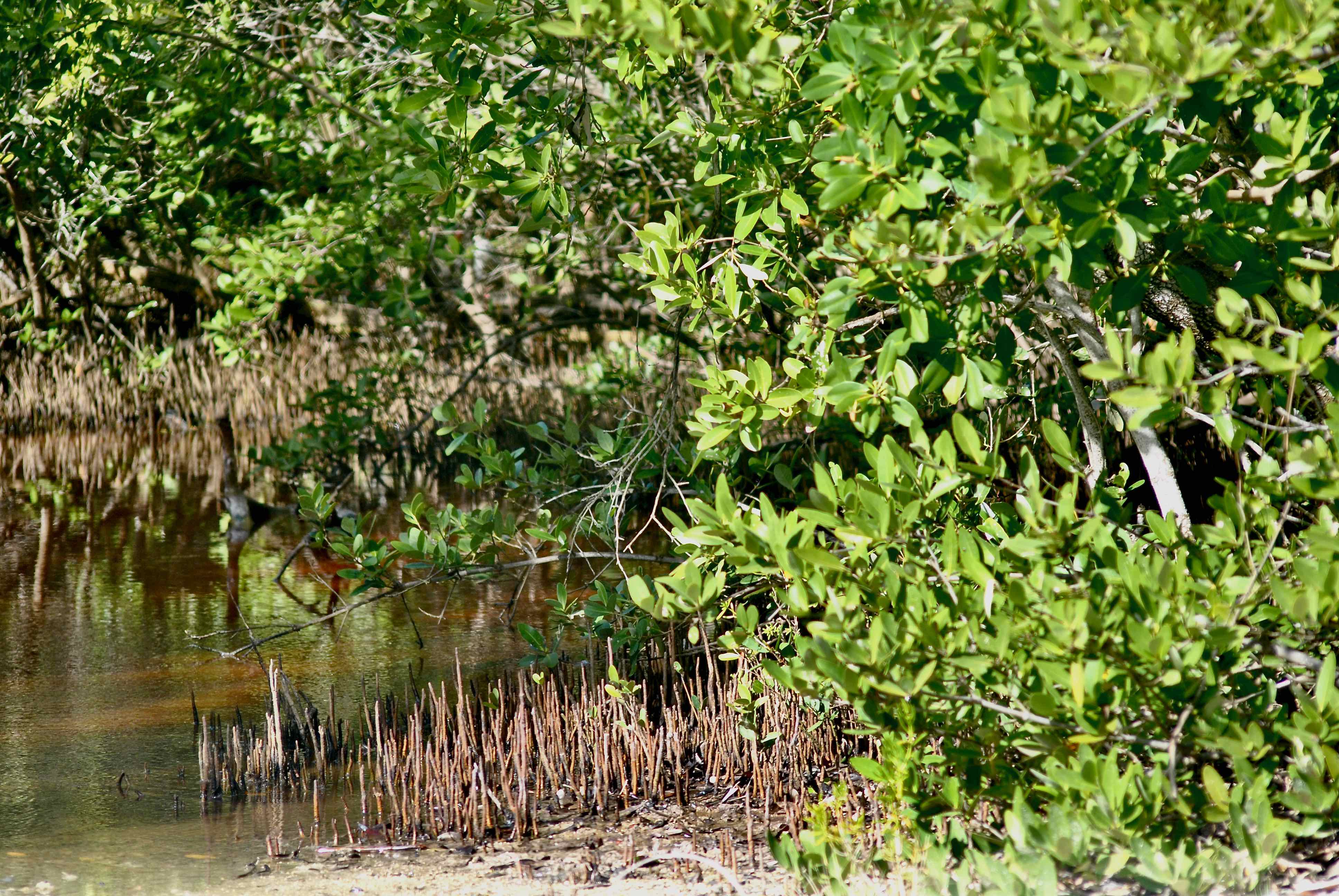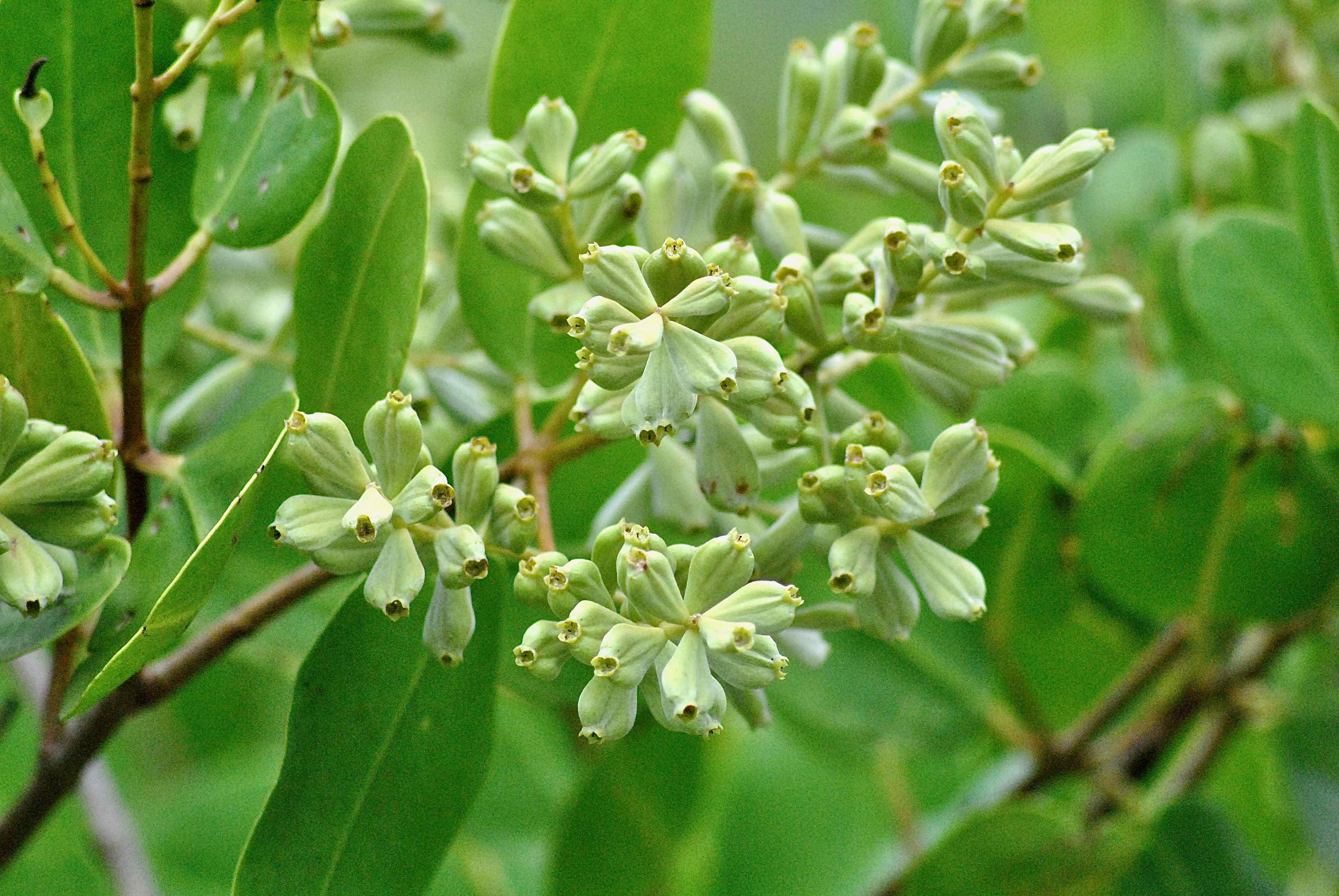
The mangrove forest at Jupiter Lighthouse Outstanding Natural Area, Jupiter, in Palm Beach County. The mangroves along the far bank are reds. Whites can be seen in the foreground.
Some call them Florida's walking trees. But in different ways, they're really Florida's guardian trees. They are the mangroves.
Globally, there are somewhere between 50 and 110 species of mangroves, three of which are found in Florida — red, white and black. Some include a fourth tree in the category — silver buttonwood. The three consensus species have two things in common: the ability to tolerate salt by either blocking it or processing it out, and seedlings that hatch while on the parent trees called propagules.
Mangroves inhabit tidal swamps. Their roots provide safe places for the spawn of fish, crustaceans and shellfish, including some endangered species and many that are important economically. Their branches serve as rookeries for birds, where roseate spoonbills, white-crowned pigeons and brown pelicans can raise their young out of the reach of predators. Mangroves provide a vital buffer against storm surge and flooding. They guard the land itself. They stabilize shorelines, and they filter water, helping maintain quality and clarity.
So what makes a mangrove a mangrove? In short, it's their ability to tolerate saltwater, a trait only mangroves have. They can survive in freshwater — you'll see mangroves in close proximity with cypress trees, which don't tolerate salt, in transition zones along the banks of the Loxahatchee River in Jonathan Dickinson State Park. But in freshwater, they have to compete with myriad tree species, whereas in saltwater, they have the place to themselves, so to speak. And because they stratify — each species occupies a niche within a mangrove forest, the red sitting in the water, the white on the bank, the black in between — they don't really compete with each other.
According to Conservation International, mangroves are found in 118 tropical and subtropical countries, and cover something like 85,000 square miles of the earth's surface. The United States has about 1,500 square miles of mangrove forests, most of which are in Florida.
Measured another way, it's estitmated that there are 469,000 acres of mangroves in Florida. That might sound like a lot, but mangroves have been on the decline for decades. The Lake Worth Lagoon in Palm Beach County has lost 87 percent of its historic mangrove acreage — crowded out by development and invasive species, like Australian pines. The remaining 276 acres, scattered throughout the lagoon, are protected, as are all mangroves in Florida. In fact, even trimming mangrove are regulated and must be done by someone licensed to do so.
Efforts are being to restore some of the lost acreage. Ocean Ridge Natural Area is an example. Palm Beach County is building so-called living seawalls where appropriate as well.
Florida's Mangroves



